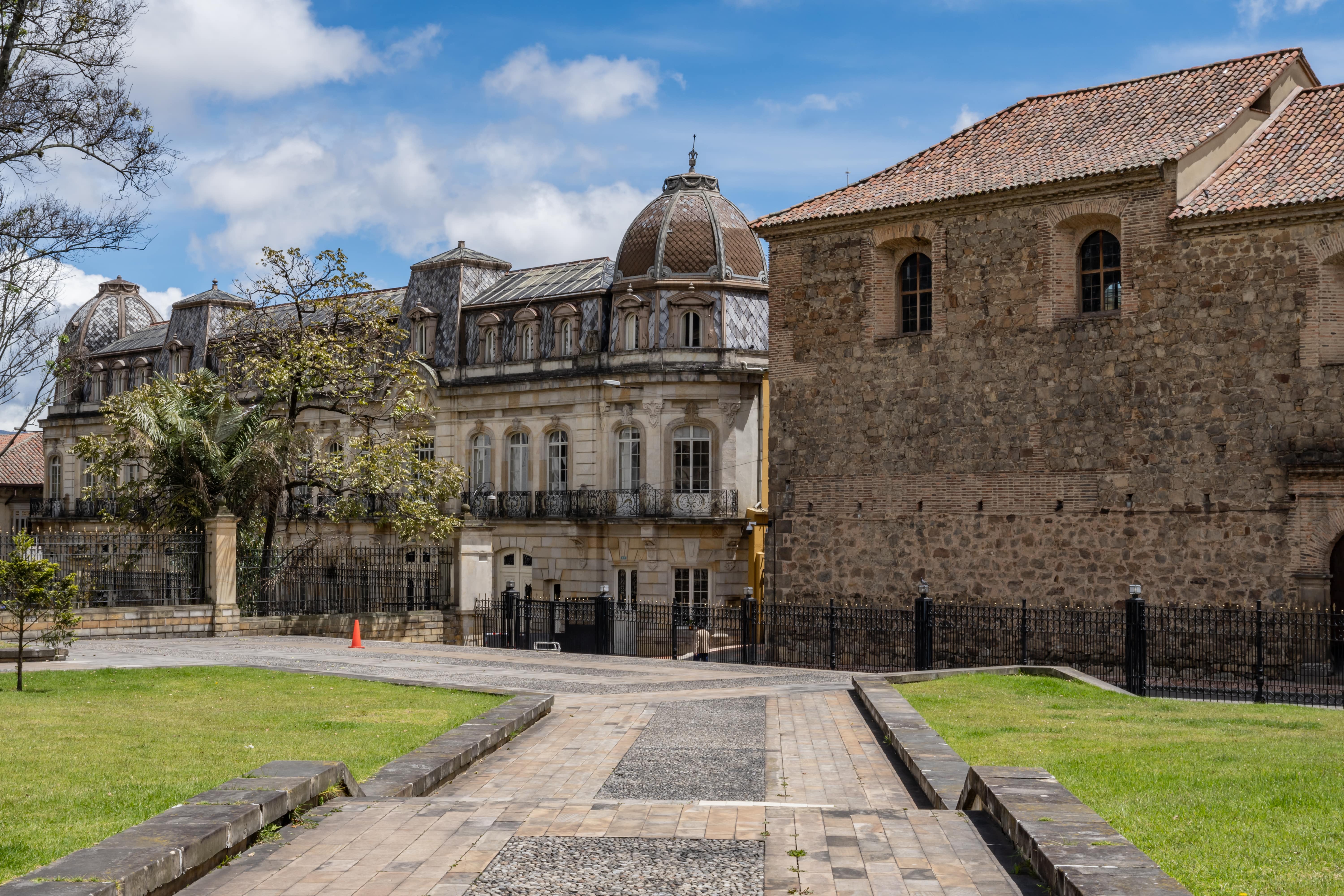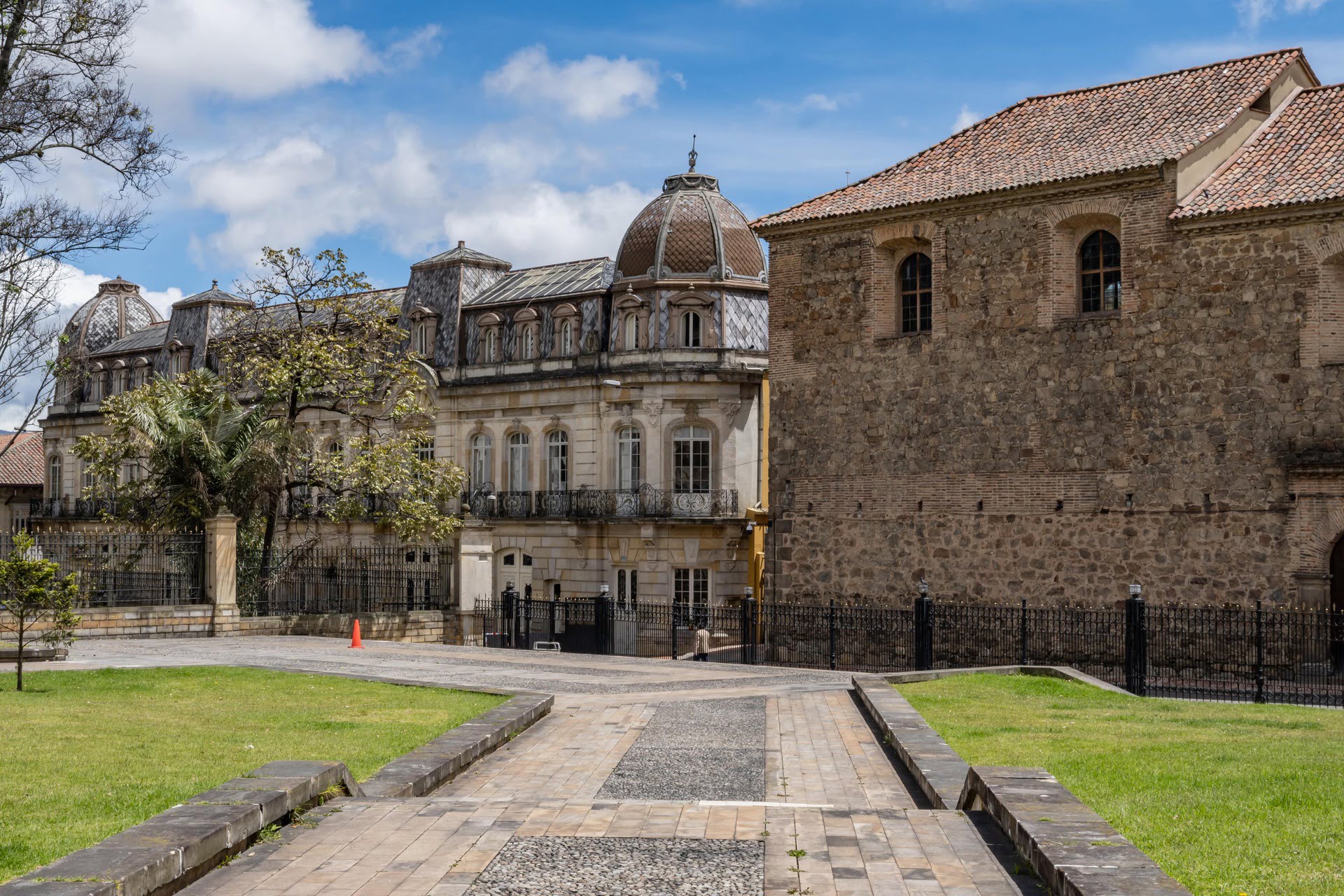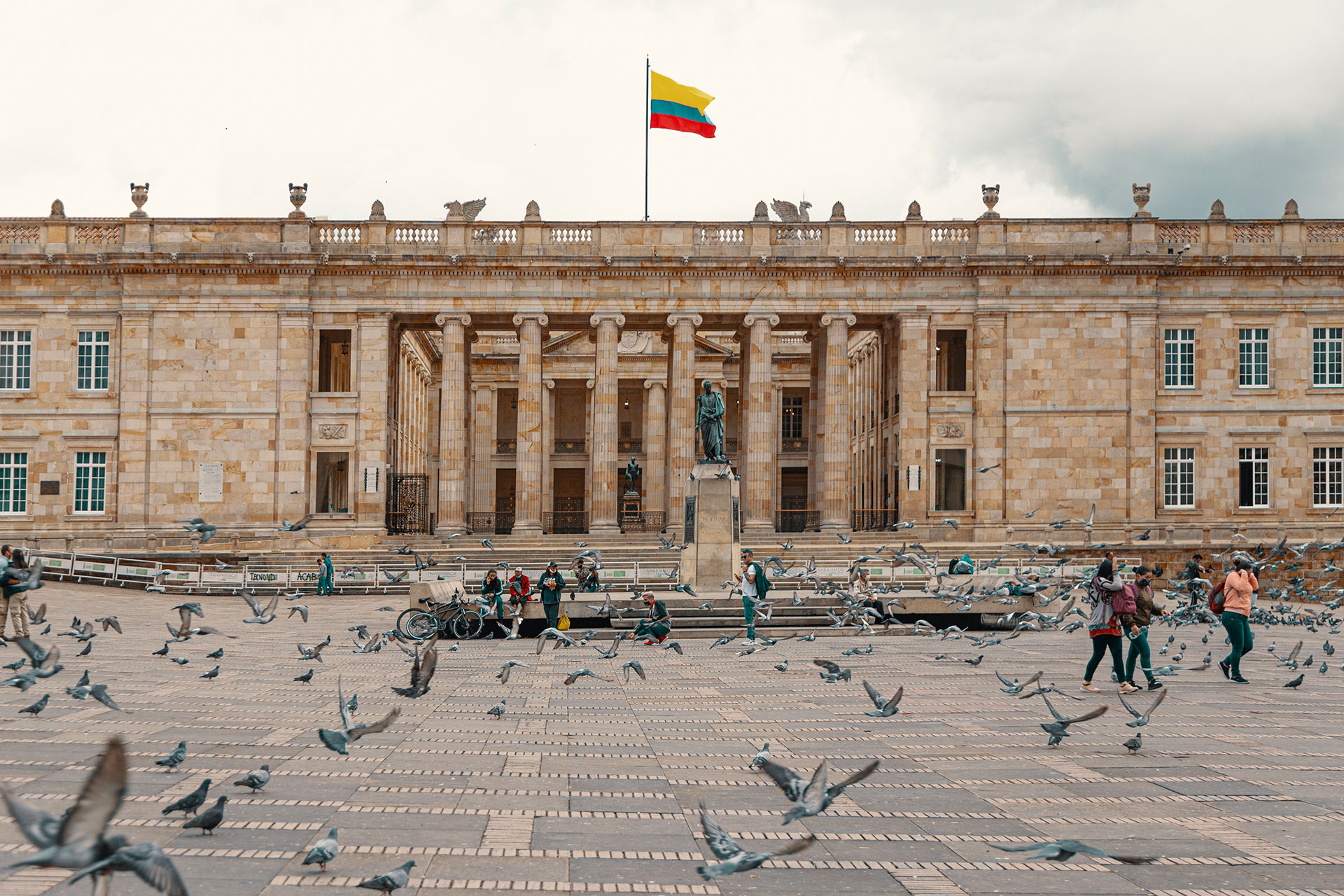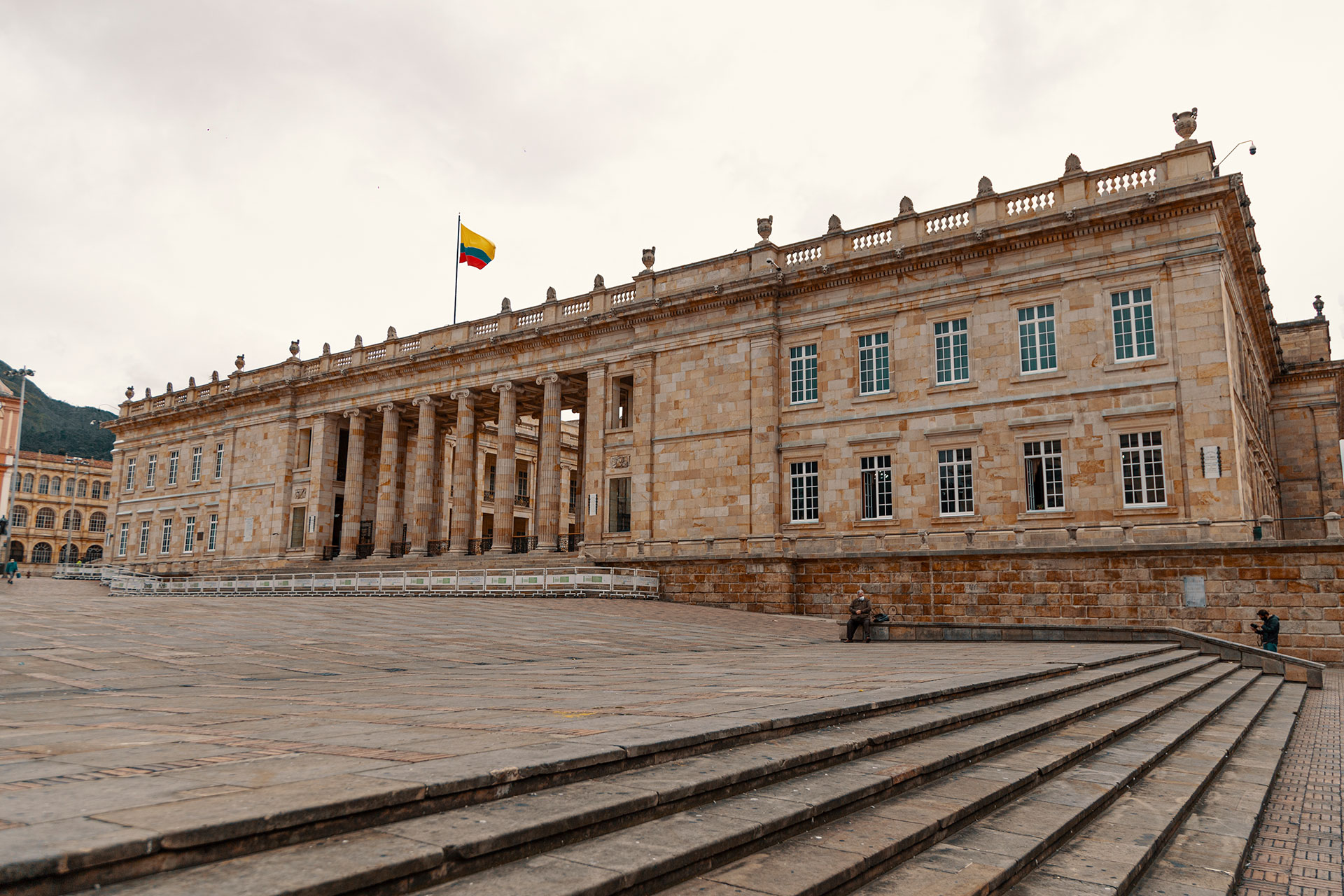Discover the history and culture of Bogotá. Explore its heritage!
Discover the history and culture of Bogotá. Explore its heritage!




International Center
From an economic point of view, the International Center is an important financial district of Bogota and one of the most notable in Colombia. Numerous national and international business headquarters are located here, as well as financial entities, banks, and governmental and non-governmental organizations. This makes it a nerve center for economic and business activity in the city and the country.
Gabriel García Márquez Journalists' Park
The Journalists' Park is an emblematic monument in the historic center of Bogotá. Pietro Cantini built it between 1882 and 1886 to commemorate the first centenary of Simón Bolívar's birth. In 2014, this iconic site was renamed Gabriel García Márquez Journalists' Park, in honor of the prominent Colombian writer and Nobel Prize in Literature.
Chorro de Quevedo
During the founding of Bogotá by Gonzalo Jiménez de Quesada in 1538, the Chorro de Quevedo was chosen as the starting point for the urban layout of the city. This historical event marked the beginning of the construction of the colonial city and established Chorro de Quevedo as a fundamental place in the history of Bogotá.
Capitolio Nacional
Its construction lasted from 1848 to 1926 and was designed by the renowned Danish architect Thomas Reed at the request of President Tomás Cipriano de Mosquera. The whole structure is made of stone. The Congress of the Republic is located there, where the congress members meet to debate and legislate the affairs of the country. The National Capitol is open to the public with guided tours, allowing visitors to see the different rooms and spaces of the building, as well as to learn about the history and functioning of this emblematic institution.
Colpatria Tower
The Colpatria Tower is an emblematic skyscraper in Bogotá, Colombia. Built in 1979, it was the tallest building in Colombia and one of the tallest in Latin America at 196 meters high and 50 stories. At 196 meters high and 50 stories, the tower is an architectural icon and a landmark in the city.
El Dorado International Airport
Bogotá's El Dorado International Airport is Colombia's main airport and one of the most important in Latin America. Inaugurated in 1959, it has undergone major expansions and renovations, including the construction of a new international terminal in 2012. Today, it is a hub for more than 30 airlines and direct flights to global destinations. It offers a wide range of passenger services and has been modernized with advanced technologies to improve operational efficiency and the traveler experience.
Chapinero
Chapinero is a district of Bogotá with a rich and varied history reflected in its architecture. In Chapinero Alto, for example, you can appreciate Republican-style houses dating from the early twentieth century, with their characteristic facades adorned with architectural details of the time. These houses testify to the urban evolution of the area and reflect the influence of colonial-era architecture in the city.
Central Cemetery
The Central Cemetery of Bogota, founded in 1836, is one of the oldest and most important cemeteries in Colombia. With an extension of approximately 20 hectares, it houses a rich history and numerous tombs of outstanding personalities of Colombian society.
The cemetery is characterized by its neoclassical architecture and imposing mausoleums and funerary monuments, many of which are works of art in themselves. Among the personalities buried in the Central Cemetery are politicians, writers, scientists and military personnel, whose tombs are testimony to the history of Colombia.
La Macarena
The La Macarena neighborhood in Bogotá is an emblematic place with a rich history and vibrant cultural life. Its importance lies in being an artistic, gastronomic and cultural epicenter of the city. Known for its colorful colonial houses and bohemian atmosphere, it is home to a wide range of restaurants, art galleries, design shops and cultural spaces. La Macarena is also recognized for being home to the La Santamaría Bullring, one of the most important bullrings in Colombia, and for its proximity to the Olaya Herrera National Park and Cerro de Monserrate, two iconic places in Bogotá.
Rosario Square
The Rosario Square, located in the historic center of Bogota, has witnessed several significant historical events for Colombia. During colonial times, this place was known as the Plaza de San Francisco, where public and religious events were held. In 1810, it was the scene of important meetings during the first independence movements. Today, Plazoleta del Rosario continues to be a civic and cultural meeting place in Bogotá, with the Universidad del Rosario as an important educational and cultural center in its surroundings.

